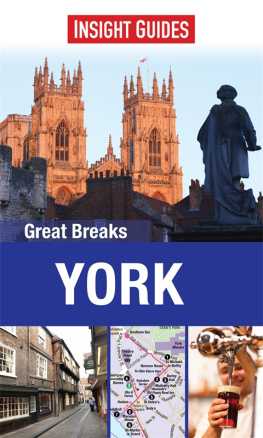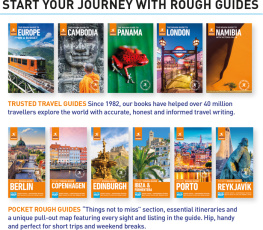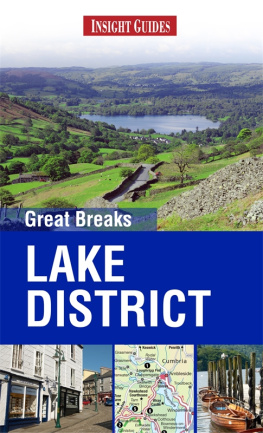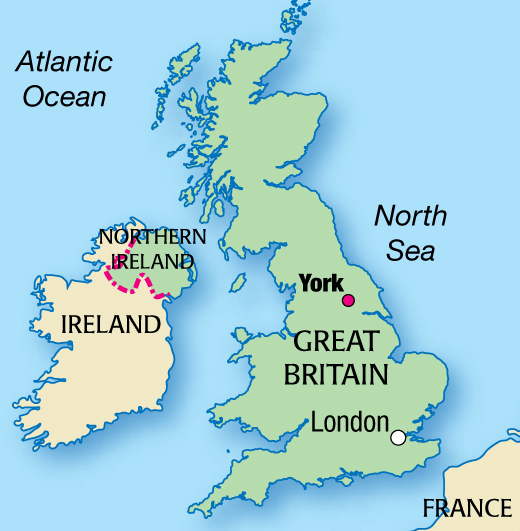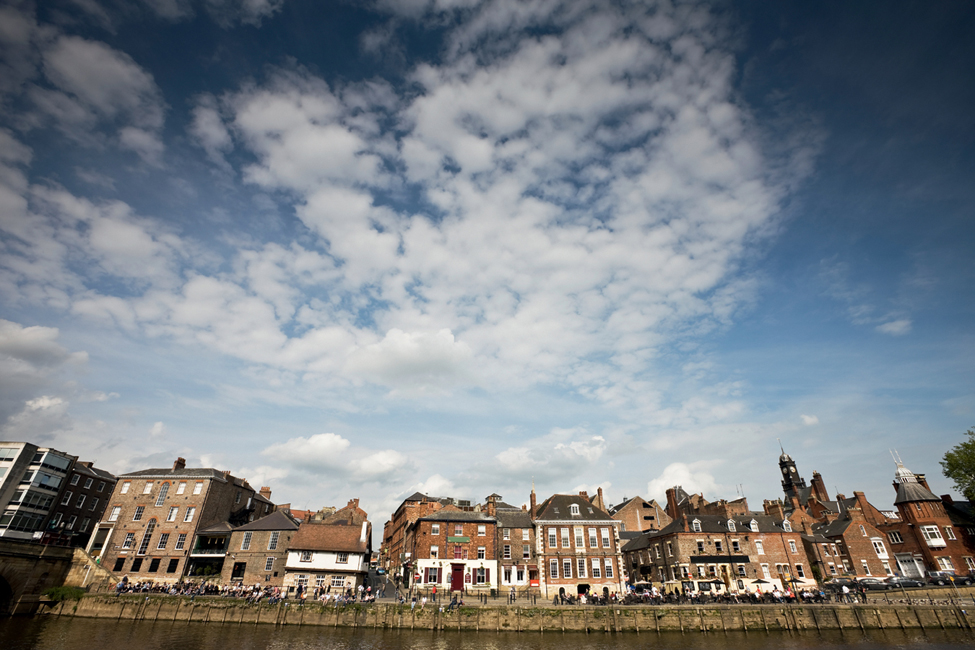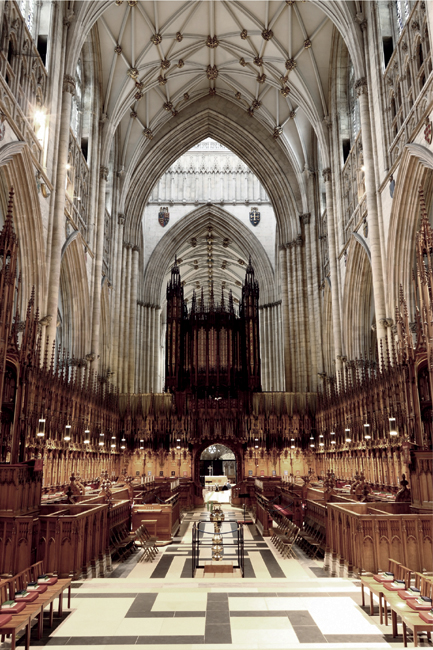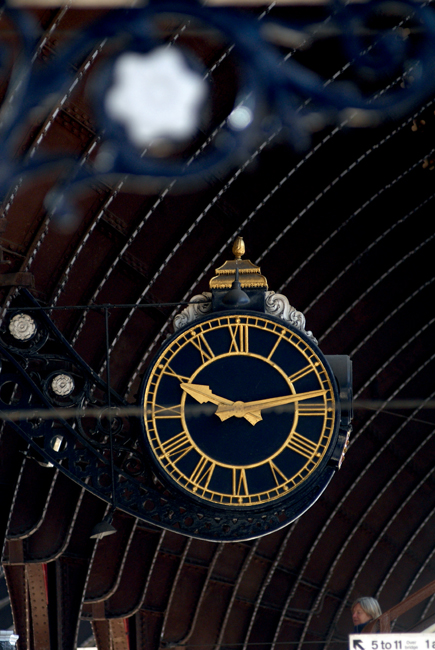How To Use This E-Book
Getting around the e-book
This Insight Great Breaks e-book is designed to give you inspiration and planning advice for your visit to York, whether you're on a relaxing weekend break or an active holiday. The guide begins with our selection of Top Attractions, and an Overview that paints the history, geography and character of York. The Tours give a complete guide to all the sights and areas worth visiting, with easy-to-follow maps and hand-picked places to eat, drink and shop en route. The Travel Tips are packed with information on active pursuits, themed holidays and transport, as well as specially selected accommodation to suit all tastes and budgets.
In the Table of Contents and throughout this e-book you will see hyperlinked references. Just tap a hyperlink once to skip to the section you would like to read. Practical information and listings are also hyperlinked, so as long as you have an external connection to the internet, you can tap a link to go directly to the website for more information.
Maps
All key attractions and sights in York are numbered and cross-referenced to high-quality tour maps. Wherever you see the reference , just tap this to go straight to the related map. You can also double-tap any map for a zoom view.
Images
Youll find lots of beautiful high-resolution images that capture the essence of York. Simply double-tap on an image to see it full-screen.
About Insight Guides
Insight Guides have more than 40 years experience of publishing high-quality, visual travel guides. We produce 400 full-colour titles, in both print and digital form, covering more than 200 destinations across the globe, in a variety of formats to meet your different needs.
Insight Guides are written by local authors who use their on-the-ground experience to provide the very latest information; their local expertise is evident in the extensive historical and cultural background features. All the reviews in Insight Guides are independent; we strive to maintain an impartial view. Our reviews are carefully selected to guide to you the best places to stay and eat, so you can be confident that when we say a restaurant or hotel is special, we really mean it.
Like all Insight Guides , this e-book contains many beautiful photographs to inspire and inform your travel. We commission most of our own photography, and we strive to capture the essence of a destination using original images that you wont find anywhere else.
2014 Apa Publications (UK) Ltd
Overview: An Eternal City
York, like Rome, wasnt built in a day, and this charming little city which bears the imprint of almost 2,000 years of history still manages to keep the fascination alive today
Y ork is a city that encompasses all of Englands history. Encircled by medieval walls and gateways that still bear the scars of battle, its great Gothic cathedral lies surrounded by quaint narrow streets. The bustling life of the golden Elizabethan age can be imagined in the half-timbered houses of the Shambles and the elegance of Georgian England savoured in the sleek lines and fine furniture of Fairfax House. The power and authority of ancient Rome can be glimpsed in the remains of legionary fortress walls, and the all-conquering Vikings have left the wooden walls of their Jorvik settlement in Coppergate. The history of York is the history of England, declared George VI.
Along the River Ouse waterfront.
iStockphoto
York has seen invaders come and go. Battles have raged around its sturdy walls and kings and queens have demanded entry at its gates. And the city has withstood them all, though each age has left some legacy of its passing. Happily though, the heart of the city somehow managed to escape the attentions of the Industrial Revolution, with the railway station firmly sited just outside the walls. The result is a very modern medieval city; one that is able to illustrate its own intriguing story through its streets, its buildings and its stained glass. It has become a compelling mixture of all former ages with some 21st-century additions. And despite all the temptations created by tourism, it remains a living city a tourist honey pot yes, but one that resolutely refuses to turn itself into a museum.
Landscape and Location
The city straddles the River Ouse and dominates the Plain of York. It stands halfway between London and Edinburgh and has, since early times, been the home of the Archbishop of York, the Primate of England, who is second only to the Archbishop of Canterbury in the hierarchy of the Anglican Church. When Yorkshire was one county, York was the county town ideally placed where the three ridings or administrative areas converged. Since 1963 it has also been a university city with a growing reputation as a centre of academic excellence.
Inside the Minster, Yorks Gothic masterpiece.
Dreamstime
For the success of its geographical location the city can thank the Romans, who picked the spot with their usual practicality. The Ouse provided them with access to the sea and the confluence with the River Foss gave their fortress water protection on two sides. When the legions marched away, Anglo-Saxon and then Viking invaders saw the strategic convenience of the site and moved in. Centuries later, York was on the coaching route between London and Scotland, and later still George Hudson, the citys Railway King, made certain that the main line north passed his city.
Economy
Yorks road and river links quickly established it as a trading centre. Even in Roman times, ships with wine from Bordeaux were docking at its quays. Medieval merchants set up a powerful Merchant Adventurers trading company. Specialist markets dealing in butter, meat, animals and hay so crowded the streets that houses, even church graveyards, were demolished to give the traders more room. For miles around, York was the place to go to sell and buy.
But the city slowly lost out economically to the industrial towns of the West Riding. York came to rely on a mixture of railways and chocolate for its prosperity. Two famous confectionery firms, Rowntree and Terrys, were the main sources of employment, along with the building of railway coaches at the headquarters of the London and North Eastern Railway Company. For a time, York became a backwater and assumed a genteel shabbiness before making a post-war revival through tourism an industry which now pours millions of pounds into the city.
The clock at Yorks 19th-century railway station.
APA William Shaw
Pedestrian Heaven
Such was the concern that historic cities could be destroyed by commercial pressures that in 1968 York was chosen for a special study by the town planner Viscount Esher. Not all his ideas were adopted, but gradually city-centre traffic was controlled, then excluded a far-seeing move that makes the York of today a pedestrian-friendly, clean, green city, with a well-organised park-and-ride scheme.

